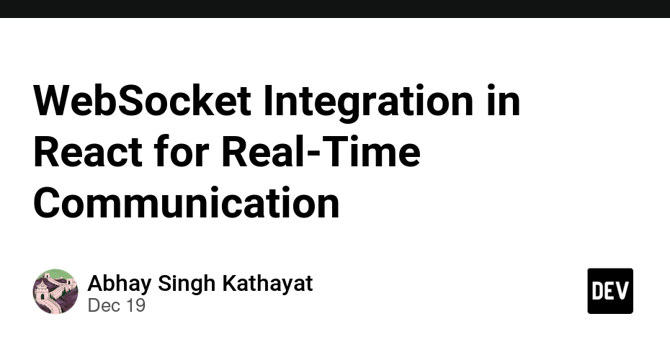Dev
3w
26

Image Credit: Dev
WebSocket Integration in React for Real-Time Communication
- WebSockets allow for real-time, full-duplex communication between the client and server.
- WebSocket connections are persistent, reducing the overhead of repeated HTTP requests.
- React provides hooks and component lifecycle methods that can help manage WebSocket connections.
- The WebSocket connection is created when the component mounts (useEffect runs).
- WebSocket provides several events to interact with: onopen, onmessage, onclose, onerror.
- You can handle WebSocket messages by updating the state each time a new message is received.
- WebSocket connections may occasionally disconnect, and handling reconnection logic can ensure that your app remains robust.
- For secured WebSocket connections, use token-based authentication (e.g., JWT) to authenticate users before allowing them to connect to the WebSocket server.
- There are several third-party libraries that can simplify WebSocket integration in React.
- Integrating WebSockets into a React application is a powerful way to enable real-time features, such as live data updates or interactive user experiences.
Read Full Article
1 Like
For uninterrupted reading, download the app